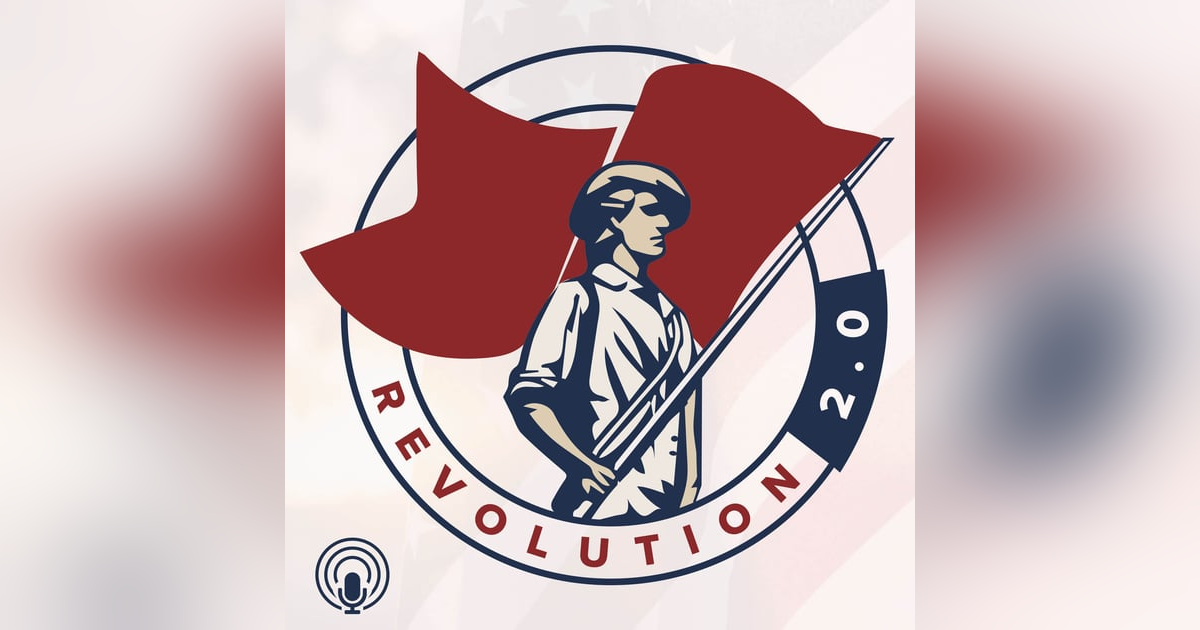
Sign up to get updates from us
By signing up, you agree to receive email from this podcast.

Introduction
Senate Democrats are aggressively interviewing Judge Barrett as if she is a candidate for Congress. But even they know that is silly, because legislators are elected by the people, not approved by the Senate.
That is the subject of today’s 10-minute episode.
Continuing
Senate Democrats are asking very little about the actual law or Judge Barrett’s jurisprudential thinking. Instead, one after another, they have used their time to focus on a parade of policy horribles if she is confirmed. And for emotional effect, they brought along photo displays of children and women who would supposedly be her victims on health care, abortion, gun violence and more. The picture they are painting is that if the Judge is appointed, women’s healthcare and healthcare in general, and LGBTQ rights will disppear, while gun safety and voting rights will also be tossed aside. All to be replaced by the world as depicted in the political scare novel, “The Handmaid’s Tale”. The Dems have been completely ignoring their role as lawmakers, and the Court’s role to determine a law’s constitutionality and to interpret it. If we end up with any of the unwanted scenarios the Democrats are painting, it will be the Legislature’s fault, not the Court’s.
“If I express a view on a precedent one way or another, whether I say I love it or I hate it, it signals to litigants that I might tilt one way or another in a pending case,” Judge Barrett said in the Senate Judiciary Committee hearing.
Senator Feinstein. “It’s distressing not to get a straight answer.” The Judge gave straight answer after straight answer, but her replies did not fit with the politicking.
Barrertt again. “Judges can’t just wake up one day and say I have an agenda — I like guns, I hate guns, I like abortion, I hate abortion — and walk in like a royal queen and impose their will on the world.” “It’s not the law of Amy,” she said later. “It’s the law of the American people.” Yes, and elected legislators write those laws.
Amy Coney Barrett’s faith, other personal choices or beliefs, must have no bearing on her rulings. The Judicial branch is not, and must not be, political. Judges and Justices must interpret the law, not make it.
Before we dig further into a conversation about the US Supreme Court and the Constitution, let’s ask a simple question: How many Americans, as in what percentage, could pass the US Citizenship Test, a test that most aspiring citizens take with English being their second language? What’s your take? (Don’t look at the answer yet.)
The Civics (History and Government) Questions part of the Citizenship test consists of 10 questions drawn from a list of 100 possible questions, and with only 6 out of 10 correct answers, you pass. They range in difficulty from the easy, like who was the first President and when do we celebrate Independence Day, to the more difficult, as in what year was the Constitution written. The vast majority of the questions are very easy; they are mostly layups, as we used to say.
Easy or not, only 36% of the 1,000 tested could pass. Remember, a passing grade is 60%. Respondents 65 and older scored the best (74 percent), while only 19 percent of test-takers 45 and younger passed. “The survey asks about everything from important dates to historical figures and current events. Only 13 percent knew when The Constitution was written, 1787, and 24 percent of respondents knew what Benjamin Franklin was known for (hint: it wasn’t inventing the light bulb). More than half (60 percent) of those surveyed did not know which countries the U.S. fought against in World War II. Fifty-seven percent didn’t know how many justices are on the Supreme Court, despite recent (heavy) media coverage.”
And these people vote. And they are following the Barrett Supreme Court hearings, either directly by watching or listening, or indirectly by allowing their selected news sources to tell them what is going on. And they have all developed opinions on the hearings. Now, tell me; if two-thirds of the citizenry cannot get a 60% passing grade on an easy Civics quiz, how are they going to understand the Constitutional duties of a Supreme Court Justice? How are they going to know when the media or their friends and acquaintances have it upside down and backwards about the Supreme Court in general, and Judge Barrett in particular?
The American government was brilliantly structured with three equal branches; two of them political, and the other decidedly not. The Executive and Legislative branches are political, still, hopefully, serving the needs of the people before serving the needs of the individual politicians or their parties. The members of the Judicial branch must–must–set aside their personal beliefs on everything from abortion to school choice to affirmative action, ruling only on the constitutionality of a law, or the fairness of its implementation.
Today’s Key Point: Justices and other judges must avoid changing or making laws based on their personal beliefs. The Judicial branch is there to rule on the constitutionality of the law and its application, and whether a crime was committed under the law. We need three equal and distinct branches of government; Judicial, Legislative and Executive–not two Legislatures and an Executive. “Judicial legislation” should be an oxymoron.
“The judge who always likes the results he reaches is a bad judge.” This is Antonin Scalia telling us in a clear and unambiguous way that a Judge (or Justice) must apply the law, the Constitution, and that his personal beliefs have no place in a decision. Here is an Amy Coney Barrtt quote from the Senate hearings, “The Judicial Branch rules only on the Constitutionality of a law, and how to interpret it.” Ah, but Will, how can anyone, especially judges and Justices, ignore anything they see as blatantly wrong? I am not recommending anything like that. In their comments, they are free to talk about what they believe to be right and wrong, and recommend action on those beliefs to the appropriate legislative authority. But that’s it. This elegant, highly functional and admirable system of the balance of power and checks and balances amongst the branches, Executive, Legislative and Judicial, must be honored and preserved.
The trap that is so easy to fall into is the, “Do the right thing now–whatever it takes.” trap. Doing the right thing in the wrong way can be more dangerous than doing nothing at all, especially when there is already a clear path, a carefully outlined process for doing the right thing in the right way. But it is often harder doing the right things the right way, yes? And if you can’t get enough other people to agree with you, then what you think is the right thing does not get done at all. Well, then phooey on waiting, and the heck with those people who might not agree with me. Let’s just get what I want done now by effectively passing laws from the bench. And then, somehow, stand up as a strong supporter of the democratic process while pushing for judges and Justices to legislate from the bench instead of leaving lawmaking to democratically elected legislators.
Do the right thing? Absolutely. And do it in the right way.
Tell me what you believe. I and many others want to know.
As always, whatever you do, do it in love. Without love, anything we do is empty.
Contact
As we get ready to wrap up, please do respond in the episodes with comments or questions about this episode or anything that comes to mind, or connect with me on Twitter, @willluden, Facebook, facebook.com/will.luden, and LinkedIn, www.linkedin.com/in/willluden/. And you can subscribe on your favorite device through Apple, or Stitcher, or any place where you enjoy your podcasts.
If you liked today’s episode, other episodes or the revolution2-0.org site itself, comment, subscribe, and encourage others to subscribe with you. Each One Reach One will help spread the word about Revolution 2.0™.
Will Luden, coming to you from 7,200’ in Colorado Springs.